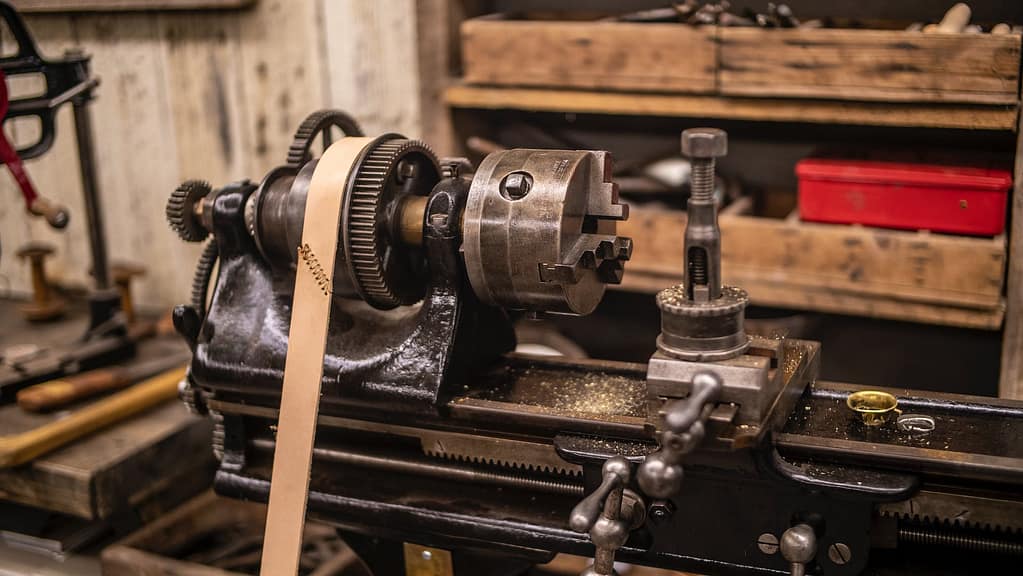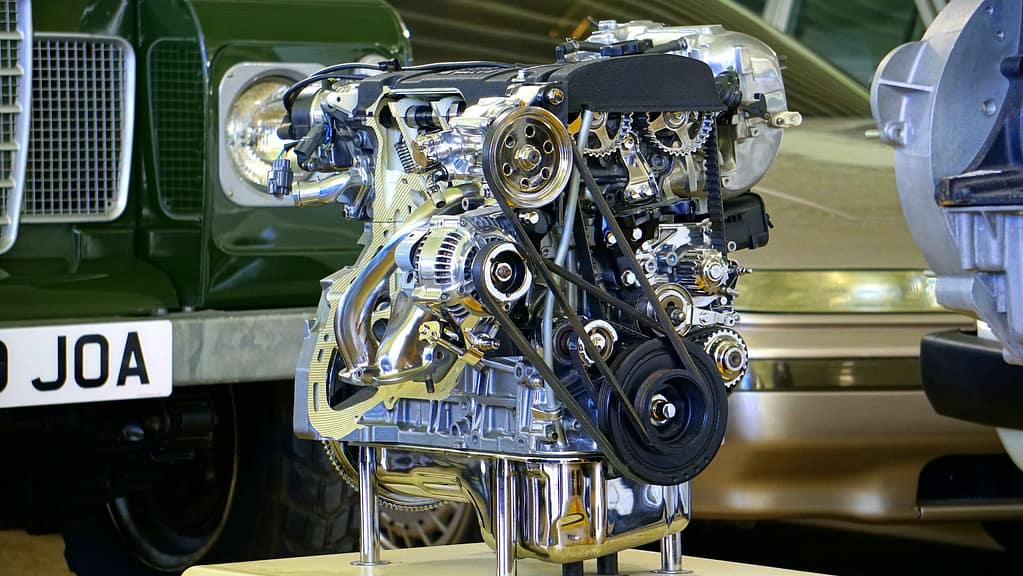What is a Belt Drive in Power Transmission?
A belt drive is a well-known mechanism that uses belts to transmit power or motion between rotating shafts. You may be familiar with different types of belt drives. However, There are different types of belts used in the industry like Flat belts, V-belts, and Timing belts. Vehicle Engines are very good examples of Belt Drive applications. However, knowing about belt drives will give you good confidence when you are working with belt drives. So, Let’s discuss “What is Belt Drive” and the Types of Belt Drives.
What is a Belt Drive?
A belt drive is a common power transmission mechanism. This very common in most of the machineries. However, it connects two rotating shafts and transmits power from one shaft to another. One shaft is called the driving shaft and the other one is the driven shaft. Power is transiting from the driving shaft to the driven shaft using a belt drive. This is the basic concept of the belt drive system.

We can’t directly connect two rotating shafts using blets. Pulleys, or sheaves are needed to connect two shafts. However, based on the belt type, the shape of the pully, grove shape, and size of the pully are also different.
Belt Drive Materials
Rubber base material or Synthetic Polymer materials are the popular material for belts. These materials give flexible features to the belts. However, It depends on the application and environmental conditions. The following are some common materials.
- Rubber- flexibility, resilience, and ability to absorb shock

- Rubber: Natural or synthetic rubber is common material for belts. It has properties of flexibility, resilience, and ability to absorb shock. It’s often reinforced with fabric or cords for added strength.
- Neoprene: A type of synthetic rubber known for its resistance to oil, heat, and abrasion. Neoprene belts are durable and suitable for demanding applications.
- Polyurethane: These belts offer excellent resistance to abrasion, oil, and chemicals. Polyurethane belts have properties like durability, flexibility, and suitability for precision applications.
- Fiberglass: Sometimes used as reinforcement within belts to add strength and stability. Fiberglass reinforcement enhances the belt’s load-bearing capacity.
- Steel: Metal belts made of stainless steel or other alloys are used in high-torque, high-temperature, or corrosive environments. They offer exceptional strength and durability.
- Leather: Historically used but less common today, leather belts offer good flexibility and grip. However, they are not as durable or resistant to environmental factors compared to modern synthetic materials.
Types of Belt Drive
There are different types of belt systems and we can mainly identify seven types.
- Open belt drive
- Closed or crossed belt drive
- Fast and loose cone pulley
- Stepped cone pulley
- Jockey pulley drive
- Quarter turn belt
- Compound belt
These are some kinds of belt configurations that can be used in different applications. Depending on the configurations belt speed and rotation direction can be changed.
Types of Belts
There are seven common belt types in the industry.
- V-Belts
- Timing Belts
- Flat Belts
- Ribbed Belts (Multi-V or Serpentine Belts)
- Round Belts
- Variable Speed Belts
- Specialty Belts
Applications of Belt Drive
We can see belt drives in various applications. Very common and well-known applications are automotive engines, industrial machinery, and bicycles.


Advantages and Disadvantages of Belt System
The belt systems have several advantages as listed below.
Advantages:
- Smooth Operation: Belt drives offer quiet and smooth operation, reducing vibration and noise c
- Cost-Effective: Generally cost-effective to install and maintain, requiring less initial investment.
- Shock Absorption: Belts can absorb shock and vibrations, protecting the machinery and components from damage.
- Simple Design: Straightforward design, Easy to install, replace, and maintain.
- Variable Speed Transmission: Some belt systems allow for easy adjustment of speed ratios by changing pulley sizes, enabling variable speed transmission.
Disadvantages:
- Slippage: Belts may experience slippage, especially in high-torque applications or when exposed to oil or grease, leading to power loss and reduced efficiency.
- Limited Load Capacity: Belts have lower load-carrying capacity, which might limit their use in heavy-duty applications.
- Limited Distance: Belt drives have a limited distance they can efficiently transmit power before experiencing significant power loss due to stretching or slipping.
- Maintenance Requirements: Belts require periodic tensioning and replacement due to wear and stretching, adding to maintenance costs.
- Environmental Sensitivity: Exposure to certain environmental conditions such as extreme temperatures, moisture, or chemicals can degrade belt materials, affecting their performance and lifespan.



0 Comments